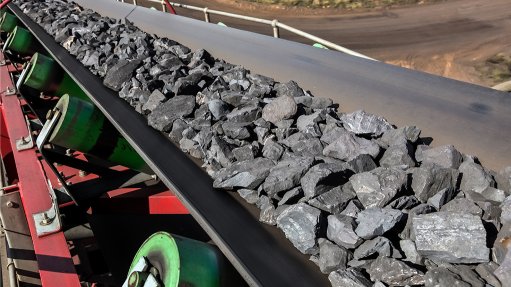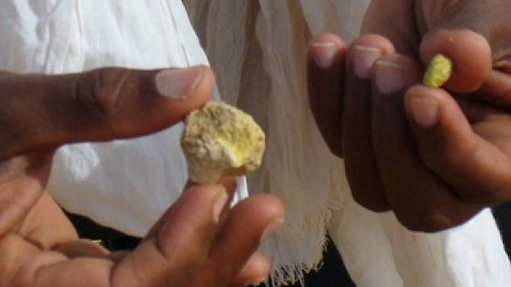Illegal mining out of control – Mine Rescue Services
JOHANNESBURG (miningweekly.com) – A surge in the number of mine rescues and recoveries at abandoned and disused operations is an indication that the illegal mining scourge is starting to spiral out of control, and the recorded incidents are just the tip of the iceberg.
The Chamber of Mines and Mine Rescue Services (MRS) on Tuesday again raised the alarm on the booming R6-billion-a-year illegal mining market, which was not only costing lives, but also weighing on the environment, stretching already-strained law enforcement resources and causing a loss of revenue, taxes and local procurement and employment opportunities, besides others.
While there had been a decline in the number of rescue and recovery incidents at operating mines, the number of accidents involving illegal miners was growing considerably, MRS CEO Christo de Klerk told media at a briefing in Johannesburg.
The private-sector organisation, which provides rescue and recovery services predominantly for the South African mining industry, first encountered an illegal mining-related incident in Barberton in 2006, when directed by the Department of Mineral Resources (DMR) to recover the body of an illegal miner, and the organisation has seen a steady increase ever since.
MRS has an agreement with the DMR to render assistance at abandoned and other mines approved by the department.
De Klerk estimated that MRS only received reports of or responded to some 10% of the underground activities, believing that 90% of underground incidents involving illegal mining activities went unreported.
He said it was likely that a large number, perhaps into the hundreds, of people were missing underground, with those involved not reporting it for fear of prosecution or deportation.
The illegal miners, the bulk of whom are illegal immigrants hailing mostly from Lesotho, Zimbabwe and Mozambique, brave weeks underground in harrowing conditions, without protective gear, carrying a concerning amount of explosives, in a desperate attempt to earn an income and support their families.
“It is spiralling out of control. It is getting worse and worse [and] something needs to be done,” said De Klerk, pointing out that no operating or disused mine was out of reach, with illegal miners targeting coal and platinum mines for copper, diamond and gold mines for their value and even manganese mines for the blue crystals found in the ore.
The limited resources of the South African Police Service, prosecuting authorities, immigration and border control, along with a depressed economy with a high unemployment and poverty rate, meant that the booming, profitable organised syndicate is difficult to suppress.
Further, a spurt of “faction wars” have emerged as miners fight for limited mining space as the DMR increasingly blocks entry into the old mines to prevent the unauthorised and dangerous activities from taking place.
However, nonmining-accident-related fatalities are now on the rise as the move leads to the concentration of illegal activities and a rise in violent claims for territory.
This has also sparked a review of the way the rescue of illegal miners will now be conducted following the first attack on volunteer rescuers early in September, when factions interfered violently with attempts to rescue miners.
De Klerk noted that in attempting to rescue people or recover bodies underground, where rescuers already faced grave danger in the form of massive fall-of-ground risks, in addition to single-entry dangerous, difficult and unstable conditions, rescuers did not need the added pressure of being caught in the crossfire between factions.
The MRS uses illegal miners as informants to provide guidance on where under the ground the incident took place and where to direct rescue or recovery efforts, as well as, increasingly, to negotiate with other more hostile illegal miners.
Meanwhile, the number of incidents in operating active and legal mines was on a downward trend, which freed up resources to provide for its other agreements with nonmember mines and DMR-dictated rescue services, De Klerk commented.
MRS has 120 member mines and 906 volunteer brigadesmen making up 134 rescue teams across South Africa.
Metalliferous fires have declined significantly, with 123 incidents reported in 1981, when one fatality was reported, peaking at 147 in 1990, with 28 fatalities, and down to 16 in 2015, with zero fatalities.
There have been ten incidents to date this year and four fatalities as a result of fires and explosions underground.
Colliery fires have also declined to zero in 2015 and 2016, from a peak of 11 in 1981, which resulted in ten fatalities.
He cited some of the biggest incidents over nearly a century, including the Kinross disaster in 1986, which claimed 177 lives, as well as an underground fire at St Helena gold mine a year later, which resulted in the deaths of 63 workers.
In 1993, 53 workers died due to a methane explosion at Middelbult colliery, while in 1995, 104 fatalities were recorded in a shaft accident at Vaal Reefs.
“This shows we are moving in the right direction,” De Klerk concluded.
Comments
Press Office
Announcements
What's On
Subscribe to improve your user experience...
Option 1 (equivalent of R125 a month):
Receive a weekly copy of Creamer Media's Engineering News & Mining Weekly magazine
(print copy for those in South Africa and e-magazine for those outside of South Africa)
Receive daily email newsletters
Access to full search results
Access archive of magazine back copies
Access to Projects in Progress
Access to ONE Research Report of your choice in PDF format
Option 2 (equivalent of R375 a month):
All benefits from Option 1
PLUS
Access to Creamer Media's Research Channel Africa for ALL Research Reports, in PDF format, on various industrial and mining sectors
including Electricity; Water; Energy Transition; Hydrogen; Roads, Rail and Ports; Coal; Gold; Platinum; Battery Metals; etc.
Already a subscriber?
Forgotten your password?
Receive weekly copy of Creamer Media's Engineering News & Mining Weekly magazine (print copy for those in South Africa and e-magazine for those outside of South Africa)
➕
Recieve daily email newsletters
➕
Access to full search results
➕
Access archive of magazine back copies
➕
Access to Projects in Progress
➕
Access to ONE Research Report of your choice in PDF format
RESEARCH CHANNEL AFRICA
R4500 (equivalent of R375 a month)
SUBSCRIBEAll benefits from Option 1
➕
Access to Creamer Media's Research Channel Africa for ALL Research Reports on various industrial and mining sectors, in PDF format, including on:
Electricity
➕
Water
➕
Energy Transition
➕
Hydrogen
➕
Roads, Rail and Ports
➕
Coal
➕
Gold
➕
Platinum
➕
Battery Metals
➕
etc.
Receive all benefits from Option 1 or Option 2 delivered to numerous people at your company
➕
Multiple User names and Passwords for simultaneous log-ins
➕
Intranet integration access to all in your organisation





















